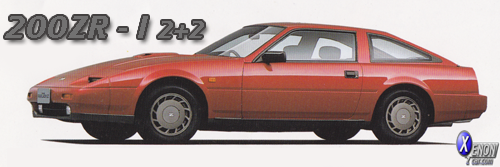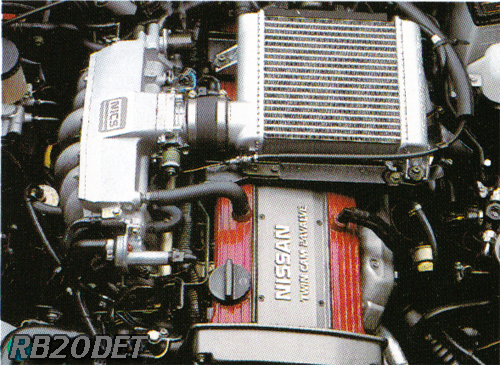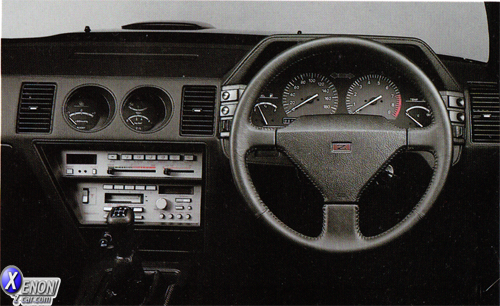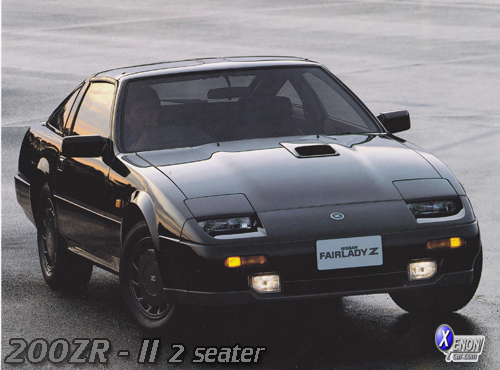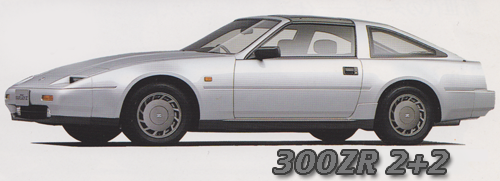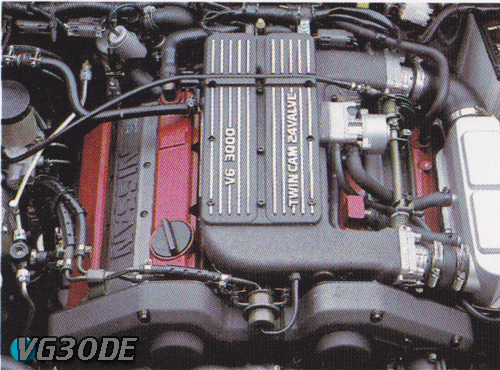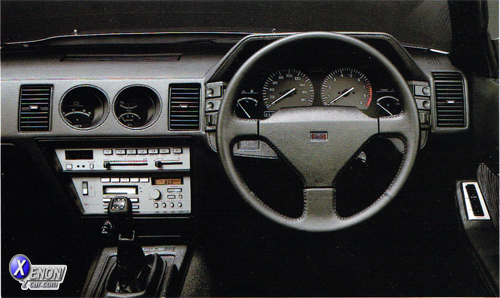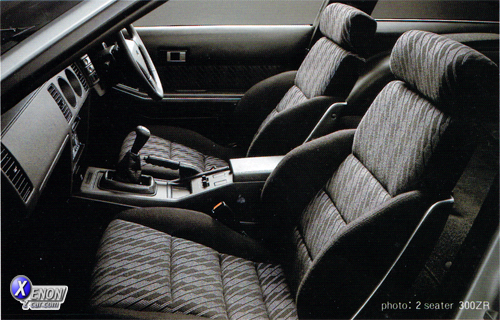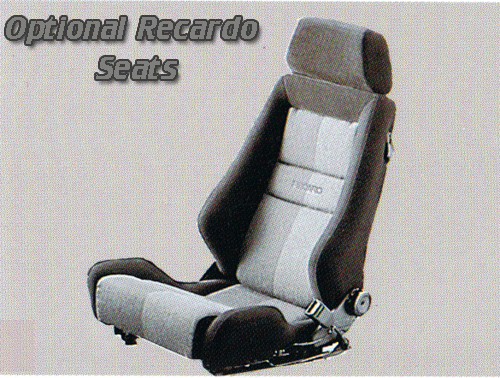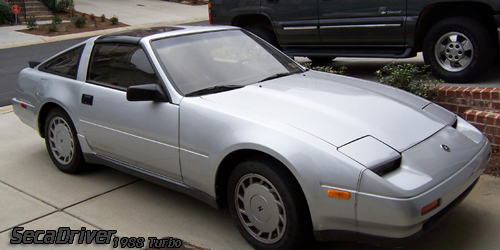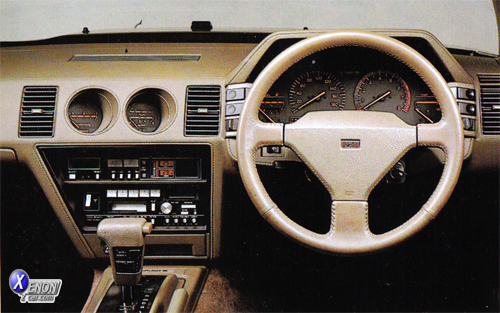Kouki 1987-1989 Models
 From 1987 to 1989 the Fairlady Z went through several upgrades. Below are details of some changes in these models.
From 1987 to 1989 the Fairlady Z went through several upgrades. Below are details of some changes in these models.
Kouki Models
- 200ZR - I
- 200ZR - II
- 300ZR
- 300ZX
200ZR - I
The 200ZR - I was again equipped with the RB20DET motor, just like the Zenki models.
The 200ZR - I kept the arched fenders from the Zenki models but added the new Kouki nose, headlights, tail lamps, and bumper. It was available in both 2-seater and 2+2 models, but only as a slicktop with manual transmission.
Differentials in automatic transmission models received a 4.625 gear set, while manual models received a 4.375 gear set.
200ZR - II
The 200ZR - II continued with the RB20DET motor as in the Zenki models and 200ZR - I.
It retained the arched fenders but added the new Kouki nose, headlights, tail lamps, and bumper. It was available in both 2-seater and 2+2 models, but only as a T-Top model.
The E4N71B 4-speed automatic transmission was available as an option for 2+2 models only.
Differentials: Automatic models received a 4.625 gear set, manual models received a 4.375 gear set.
300ZR
The 300ZR was the first Fairlady to feature a 3.0-liter DOHC V6 engine.
It was available in both 2-seater and 2+2 models, with or without T-Tops. The interior is similar to the 200ZR in fabrics and materials.
The 300ZR was also offered with the popular Recaro manual bucket seats.
The differential in the 300ZR was an R200 with a 4.111 gear set.
300ZX
Like the 200ZR, the 300ZX received new front and rear bumpers with a more rounded look. New headlights and taillights were also added.
Interior materials were updated to new patterns, and Recaro manual seats were an option in the Japanese market. In the USDM, cloth and leather were available, and in 1988 the same Recaro buckets were offered in the
Special Edition Shiro Special during the Nissan White Sale.
The engine was still the VG30E and VG30ET. Minor changes in 1988 led to the "W-series" designation. Turbo size was reduced to a T25 instead of the previous T3, and compression on turbo motors was increased to 8.3:1, raising power to 205HP. The turbo manual transmission switched from the Borg Warner T5 to the FS5R30A Nissan unit. The turbo spoiler also changed to a new plastic model (Part #96030-21P10).
In April 1987, North American turbo models started receiving a 3.700:1 clutch-type limited slip differential. The 1988 Shiro Special got a 3.700:1 viscous limited slip. In the JDM market, turbo cars received a 3.545 ratio.
SF models were still available with red or tan cloth interiors.
GL and GLL models still had the same interior color options.
Vented rotors were added to the rear of Kouki models.
Once again, wheels changed.
Non-turbo models received 15x6.5" wheels with covers over the lugs, and turbo models had the same style but in 16x7". 1987 turbo models received a charcoal-painted 16x7" wheel and non-turbos were just aluminum. 1988-1989 models were the same but the charcoal paint changed to grey. 1988 Shiro wheels were painted white to match the body, and this was also offered in 1989 with either the 15x6.5" or 16x7" wheels if paint code #234 Moonglow Pearl was chosen.
Non-turbo models lost the injector cooling fan.
Turbo models received larger slip-on front rotors and a new front hub. These are sought after as an upgrade for early models and non-turbos, making it possible to
upgrade to larger 4-piston calipers from the Z32.
Trim Options
|
SF |
GL |
GLL |
| 1987 |
5 lug wheels standard |
Cruise control now an option |
- Digital instrumentation now an option
- Headlight sprayers optional
|
| 1988 |
No changes |
No changes |
No changes |
| 1989 |
No changes |
No changes |
No changes |
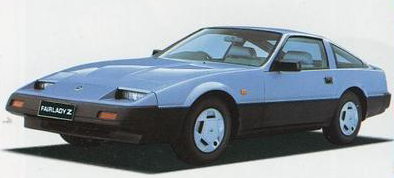
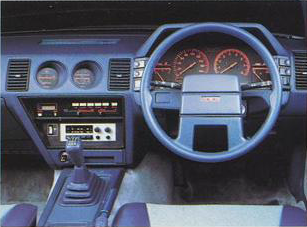







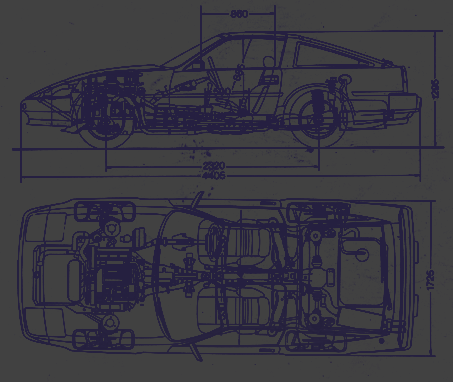

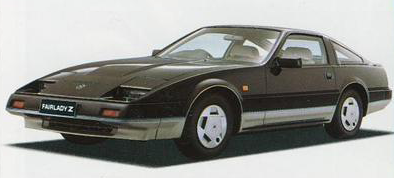
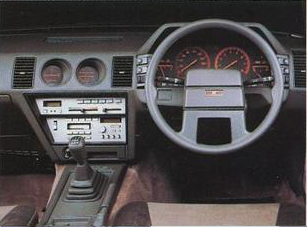
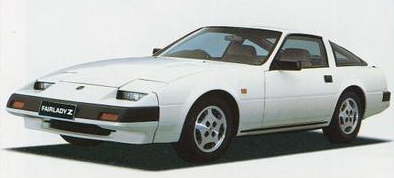
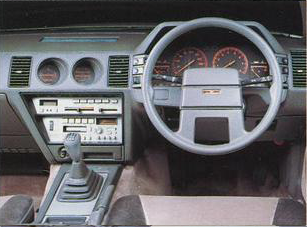
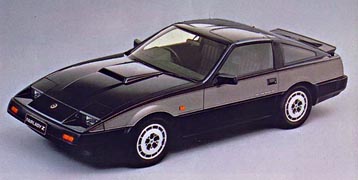
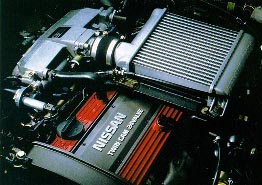
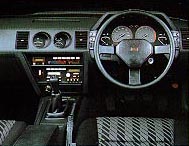
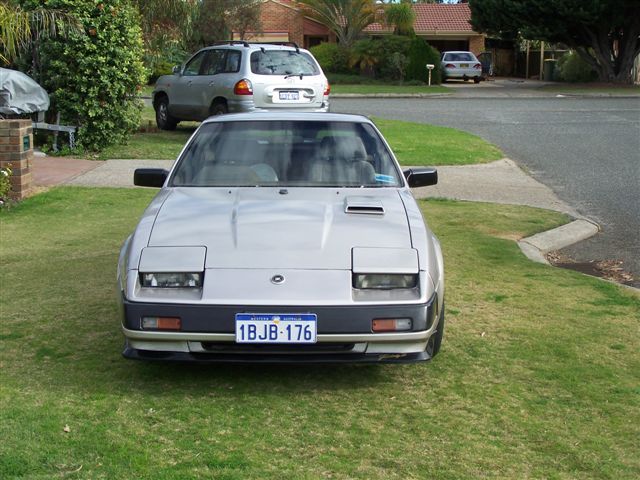
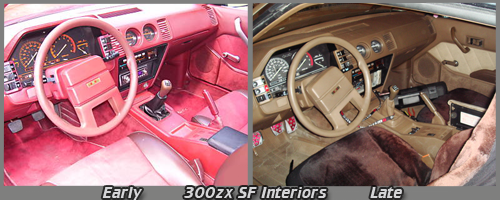
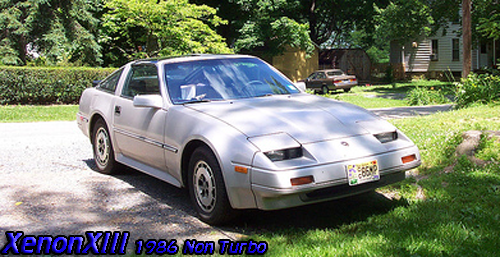
 1986 was a strange year for the Z car. In the US market, the 300ZX received a minor facelift with flared fenders and side skirts based on the 50th AE model (except for the SF model), and the bumpers were painted body color instead of the black stripe.
1986 was a strange year for the Z car. In the US market, the 300ZX received a minor facelift with flared fenders and side skirts based on the 50th AE model (except for the SF model), and the bumpers were painted body color instead of the black stripe.

